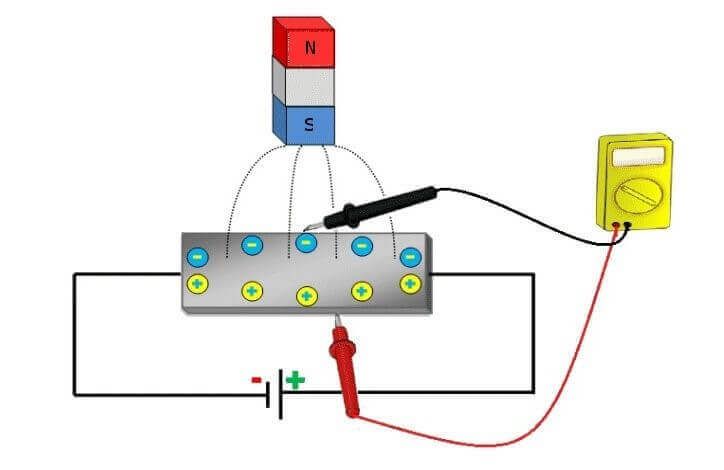A useful invention for a gadget is a sensor that works on the principle of the Hall effect

Today, even the most ordinary phone has already become “smart”. Manufacturers stuff devices with processors and various smart sensors: lighting sensors, proximity sensors, accelerometer, gyroscope. But this is not a complete list of all the interesting components of phones today. One of the most curious is the Hall sensor. What exactly is it interesting for? Let’s figure it out.
A sensor operating on the principle of the Hall effect
This sensor detects the presence of a magnetic field and measures its strength. For the phone, its simplified version is used, reacting only to the field. Back in 1897, the so-called Hall effect was discovered, according to which the sensor works. The idea of this phenomenon is that being in a constant magnetic field, the electrons deviate from one of the faces of the plate. On the one hand, a negative charge is collected, on the other – a positive one. The potential difference that has arisen in this way is recorded by the sensor. The sensor in the phone is a chip with a binary code. It is not possible to take advantage of other advantages of the sensor, due to the lack of space in the case and insufficient battery power.
It also serves for the following purposes:
-
GPS operation stabilization. It helps the system to find us faster on maps, minimizing delays in the operation of the phone and increasing the accuracy of location determination.
-
Makes it possible for gadgets to continue working, while extinguishing the screen. This applies to folding phones and laptops. A sensor is installed on one side of the clamshell, and a magnet is installed on the other. When the phone closes, the sensor is triggered, so that the display turns off, and the system can perform some other task. For example, closes the application. The sensor helps the laptop to stay in standby or sleep mode.
-
An interesting way to use the sensor is a stylus, a magnetic case or a keyboard. The iPad Smart Cover functions precisely according to this technology. Read more about this feature later.
Magnetic case and Hall sensor
A useful invention of the last decade is a magnetic case, thanks to which the phone screen turns off or on. An example is a Smart Case for iPad. The built-in sensor reacts to a magnet that is approaching and locks the screen. When the reverse action is performed, the screen lights up. A convenient innovation is flip cases (magnetic cases with a small cutout for displaying the player, switching songs in it or to answer calls). How is this possible? The high magnetic field makes it possible to keep the display on or to highlight the required area of the screen. What is important, the magnet for the phone is absolutely harmless.
Does my phone also have a Hall sensor?
There are several ways to answer this question:
-
Find documentation on your model on the manufacturer’s website, where to find information.
-
Find out if there are magnetic covers for your model, if “yes”, then the sensor is definitely present.
-
Bring a small magnet to the phone screen: if the screen goes out when it approaches, and lights up when it moves away, then there is a sensor.
Today, a large number of devices and smart homes are equipped with a Hall sensor. No one even thinks that behind such a simple device is the greatest scientific discovery!
